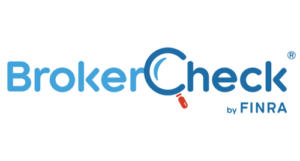
Fixed and Immediate Annuities
https://vimeo.com/737034942/62e7a7f3b5 The word annuity means a stream of payments. We’re familiar with this concept as it applies to traditional pensions. Unfortunately, there are fewer and

https://vimeo.com/737034942/62e7a7f3b5 The word annuity means a stream of payments. We’re familiar with this concept as it applies to traditional pensions. Unfortunately, there are fewer and

https://vimeo.com/737036436/4409d377c4 Do you feel you have taken the steps to ensure your financial future, having an IRA and/or a 401(k) account? Do the new tax

https://vimeo.com/736341753/7c0bc1d519 If you are planning for your future, then you know that having enough money upon retirement is a top agenda item. It can be

https://vimeo.com/736341740/c590c1d299 Imagine you’re in a mall with your spouse and you realize there was something you forgot in the car. You then suggest, “honey, wait

https://vimeo.com/736341739/be264ed6fe When it comes to trusting someone with your hard-earned money, you want to know you’ve chosen a reliable, ethical financial agent who is acting
Through accountable practices, we ensure that every recommendation, decision and action made on your behalf is justifiable, transparent and rooted in sound financial logic.
In short, we work for you. We are proud to assist you with your financial planning and advisor needs, whether it be here locally in Prescott, AZ or beyond.
 Check the background of your financial professional on FINRA’s BrokerCheck.
Check the background of your financial professional on FINRA’s BrokerCheck.
Christopher Wright is a Registered Representative of Realta Equities, Inc. Realta Equities, Inc. is not affiliated with Wright Wealth Management Group located at 3181 Clearwater Drive, Suite A, Prescott, AZ 86305. Securities are offered through Realta Equities, Inc., Member FINRA/ SIPC, 1201 N. Orange St., Suite 729, Wilmington, DE 19801.
Realta Wealth is the trade name for the Realta Wealth Companies. The Realta Wealth Companies are Realta Equities, Inc., Realta Investment Advisors, Inc., and Realta Insurance Services, which consist of several affiliated insurance agencies.
The content of this website is provided for informational purposes only and is not a solicitation or recommendation of any investment strategy. Investments and/or investment strategies involve risk including the possible loss of principal. There is no assurance that any investment strategy will achieve its objectives.
Copyright © 2022 Wright Wealth Management, All Rights Reserved